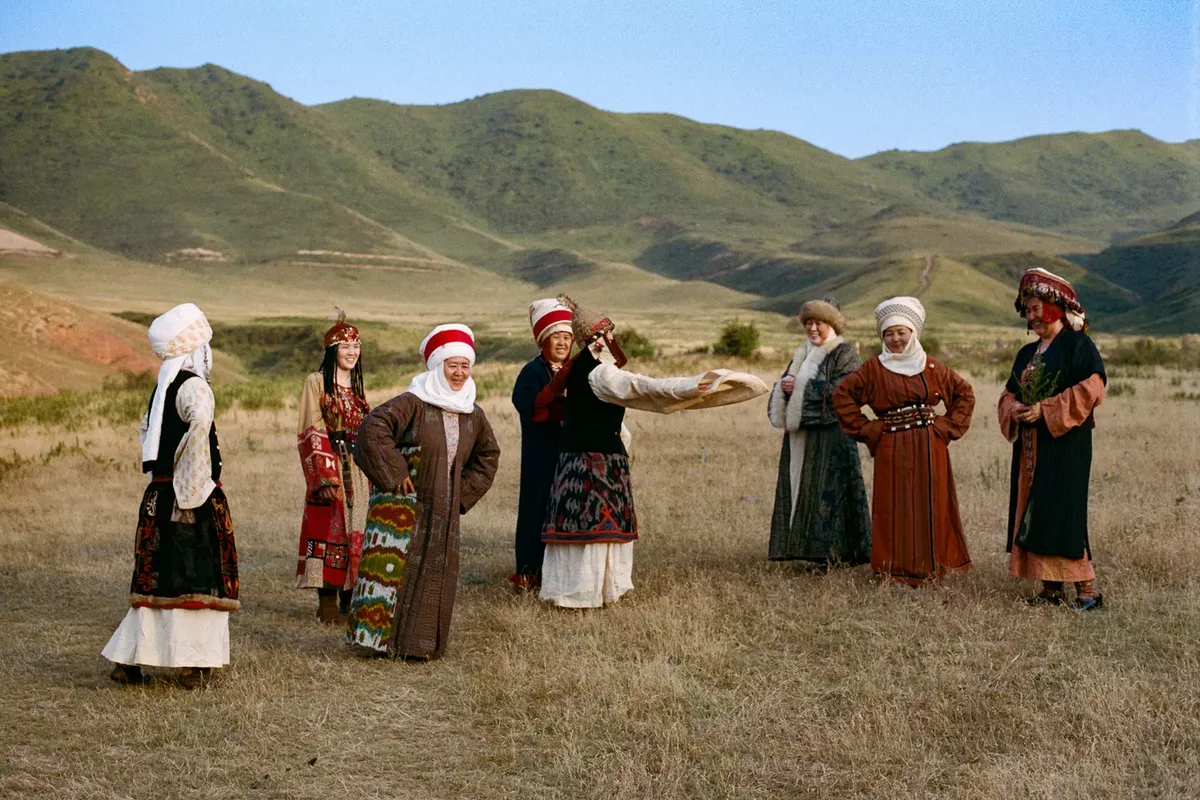
On a scorching June afternoon outside Bishkek, Kyrgyzstan, Aliman Esenalieva, 60, was at work in a felted yurt, finishing a delicate seat cover. Despite temperatures soaring to 90 degrees, Esenalieva remained “cool and comfortable,” thanks to the natural insulating properties of felt.
Esenalieva, a veteran artisan at Tumar Art Group, a felting collective founded in 1998 by Chinara Makashova and her aunt Roza, is part of a resurgence in traditional Kyrgyz crafts, The Caspian Post informs via foreign website.
“After we gained independence, people started to think, ‘Why have we been associating ourselves with Russians? We are not Russian. We are Kyrgyz. But who and what is Kyrgyz?’ So we started the process of self-identification,” said Nazgul Esenbaeva, Tumar’s commercial director. “[Kyrgyz is] our mother tongue. Our nature. Our folk music. Our national dress and cuisine. And our art. Our traditional folk arts and crafts.”
Over the past two decades, Kyrgyzstan has seen renewed interest in felting, with UNESCO recognizing shyrdak and ala-kiyiz rugs in 2012, ak-kalpaks in 2019, and elechek in 2023. Tumar employs 220 artisans-80% women-producing felt by hand using traditional methods. “Using natural threads like we do takes a lot more time than using acrylic threads from other countries, which is what a lot of other local craftspeople do,” Nazgul explained. “But doing it the traditional way is how we honor our culture.”
International partners, such as Kyrgies, value both the quality and sustainability of Tumar’s products. “Kyrgies has spread by word-of-mouth more than anything else, because people really love everything about the slippers-not least the story of the felt,” said founder Barclay Saul.
For Makashova, what began as a survival strategy after the Soviet Union’s collapse has become a source of national pride. “When Roza and I first started Tumar, we just wanted to blend into the world. To survive. But now, as Kyrgyz people, we are trying to stand out,” she said. “We are trying to celebrate what makes us different in this world. And the felting process gives us the strength to do that-because it connects us to our roots. It helps us feel proud to be from here. This is our culture. It is part of us. It is part of who we are.”
Share on social media